Plant Bible Revival: The Conservation of a 15th-Century Herbal, Then and Now
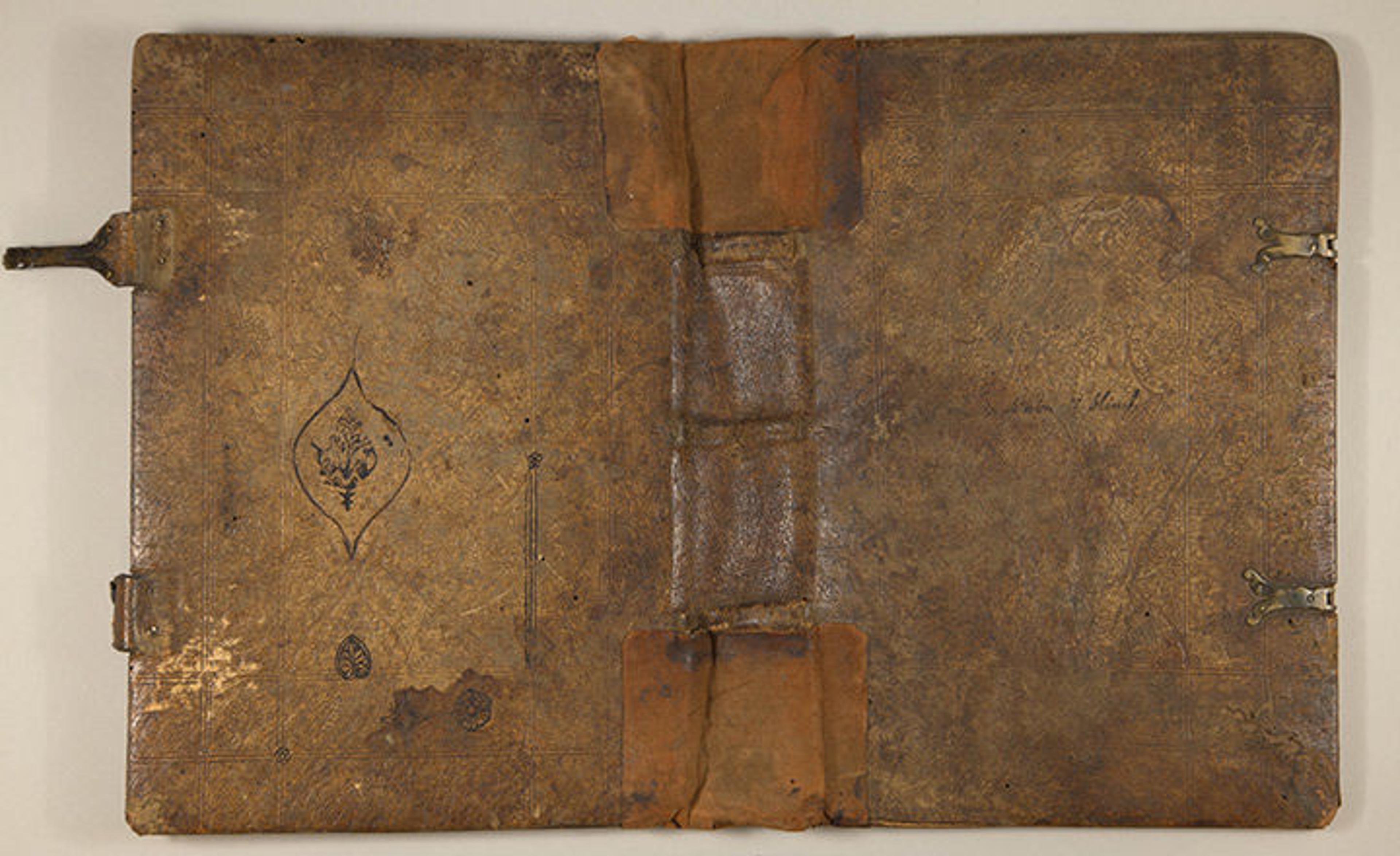
Previously repaired cover of Der Gart der Gesuntheit (Garden of Health) printed by Johann Grüninger. Strasbourg, ca. 1489 (44.7.21). This book had suede onlays wrapped around the head and tail, to stabilize the broken endcaps. (The early pen and ink doodling on the back cover traces several of the blind tooling impressions with a pen and ink.)
«This magnificent 15th-century herbal, which has been in The Met collection for 73 years, was among the most damaged of the 186 books I treated thanks to the generous New York State Grant Program for Conservation and Preservation. This year's project focused on plant and garden books in the Department of Drawings and Prints. To make this book accessible to the public once again, while also maintaining the integrity of its history and functionality, I developed a customized treatment plan.»
Identifying the Problems
Books can easily be damaged, sometimes by natural phenomena (such as damp environments or insects), and sometimes through human error (whether it be deliberate or accidental). In some cases, the damage may have been caused by the work of a previous conservator who worked to the best of their ability, knowledge, and materials, but unwittingly sowed the seed for future damage. Johann Grüninger's herbal suffered from all three causes and presented challenging conservation issues. When I encountered this book silently resting in a clamshell box, it had been damaged by water, which caused the pages at the head of the spine to disintegrate; by insects, which ate holes in the paper and wooden boards; and by human hands, which broke one of the clasps, doodled on the back cover, tore pages, and made a makeshift repair that set the stage for later injuries.
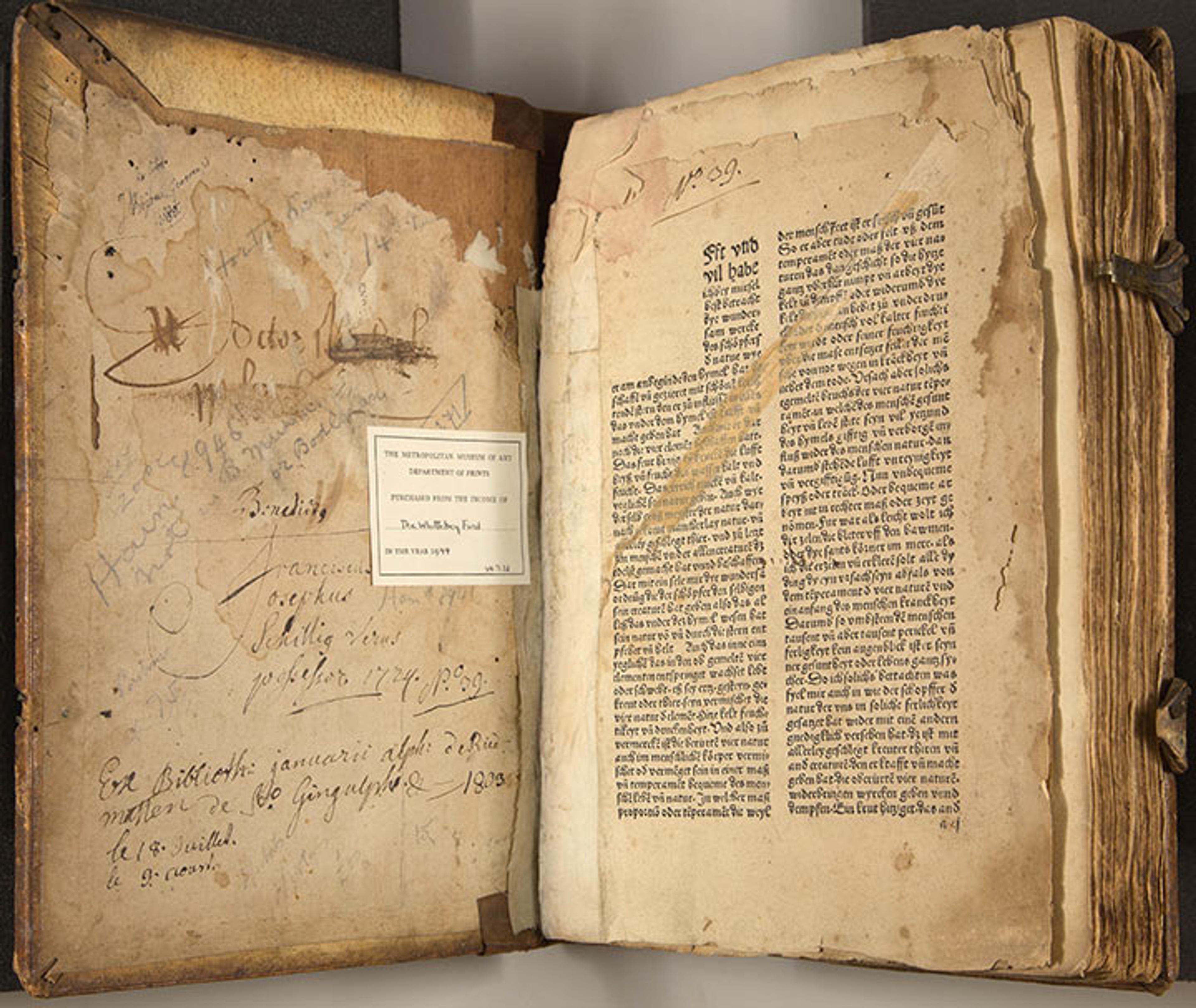
Note the wormholes on the wooden boards and first page of text, as well as previous tape repair and heavy repair paper that was used to hinge the signature to the front and back boards.
Due to the water damage received at some point during its life, the book's original binding gave way and two of the three pairs of cords on which the book was sewn separated from the text block, leaving it hanging and revealing many broken sewing threads. To hold the damaged signatures together, a former restorer covered the spine with cloth and then adhered more cloth to hinge the book back into its original wooden boards.
While this repair held everything in place, the linen hinges and repairs made out of heavy paper prevented the book from being opened more than 45 degrees. As a result, the book had to be opened with considerable force by anyone who wanted to see a full page clearly. Through use over time, the entire first and last signatures, to which the repairs were adhered, were torn away from the rest of the text block.
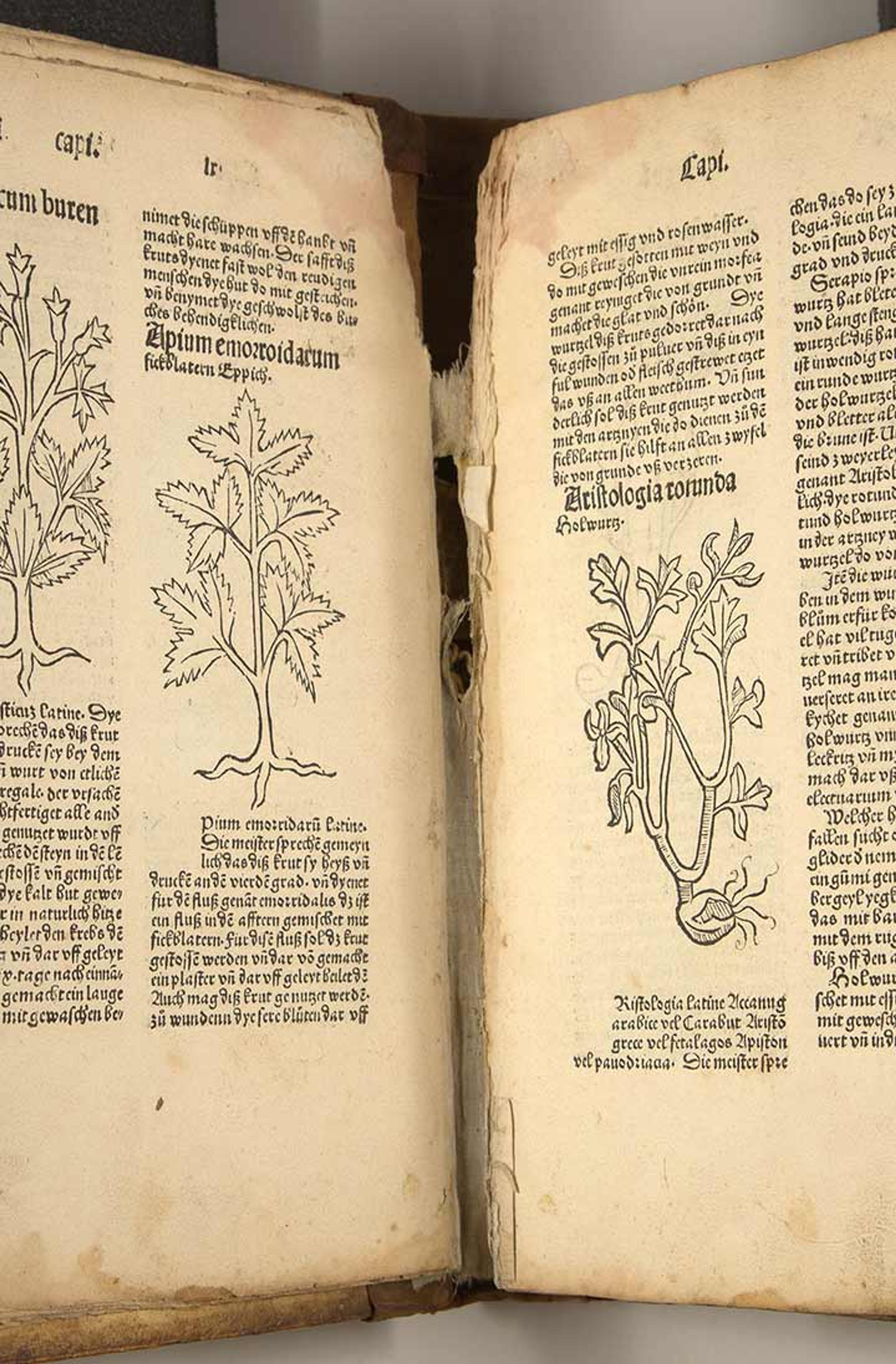
Signature a (left) is pulled away from signature b (right) by the strength of the linen hinge.
On top of that, because the book was not resewn and laced anew into its boards, the text block shifted so far toward the fore edge that the fragile page edges pressed against and were abraded by the metal clasps.
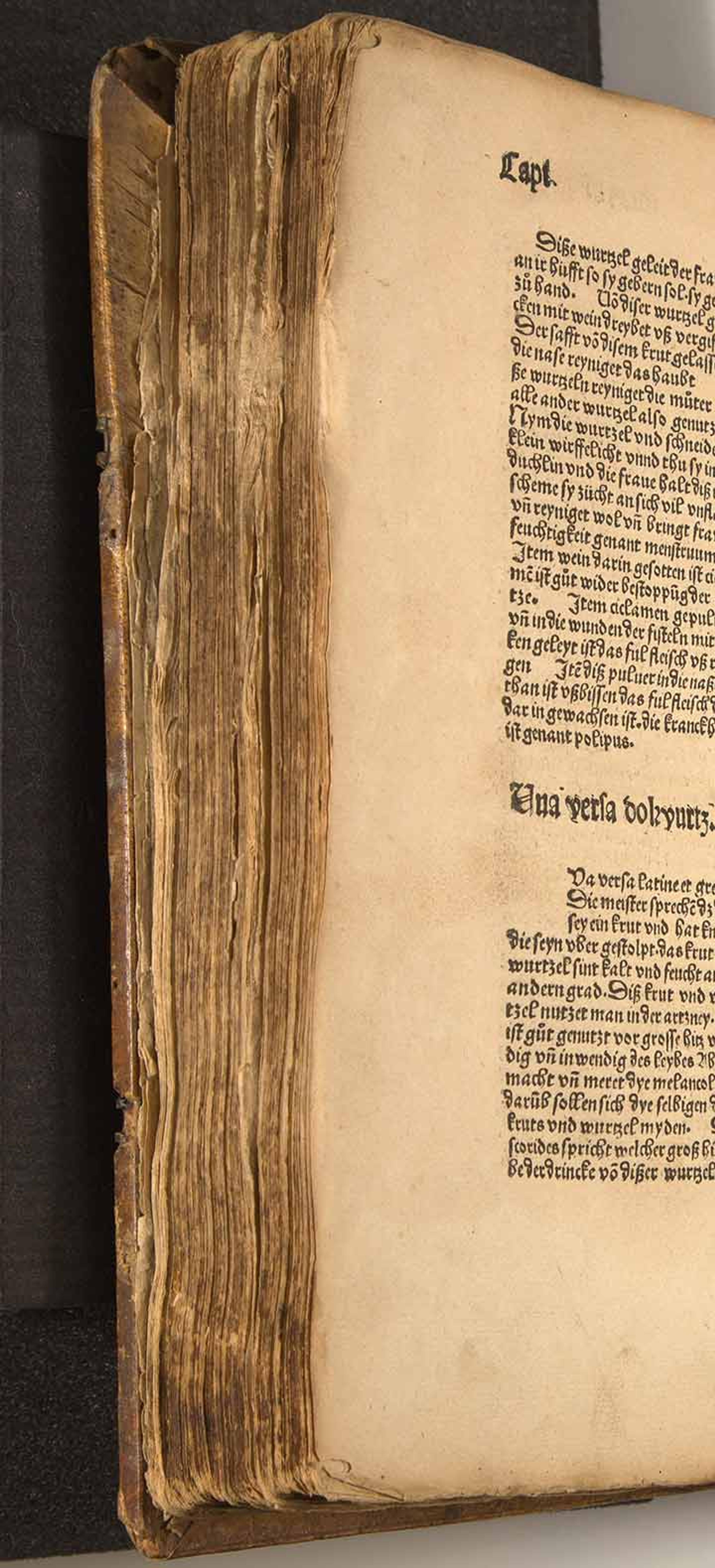
This detail of the abraded fore edge caused the text block to be pushed from the outer spine toward the metal clasps.
In addition to the functional problems caused by the old repairs, there were also some aesthetic concerns with regards to the suede patches that had been wrapped around the head and tail (to stabilize broken or missing endcaps), which were not sympathetic with the color and texture of the original binding.
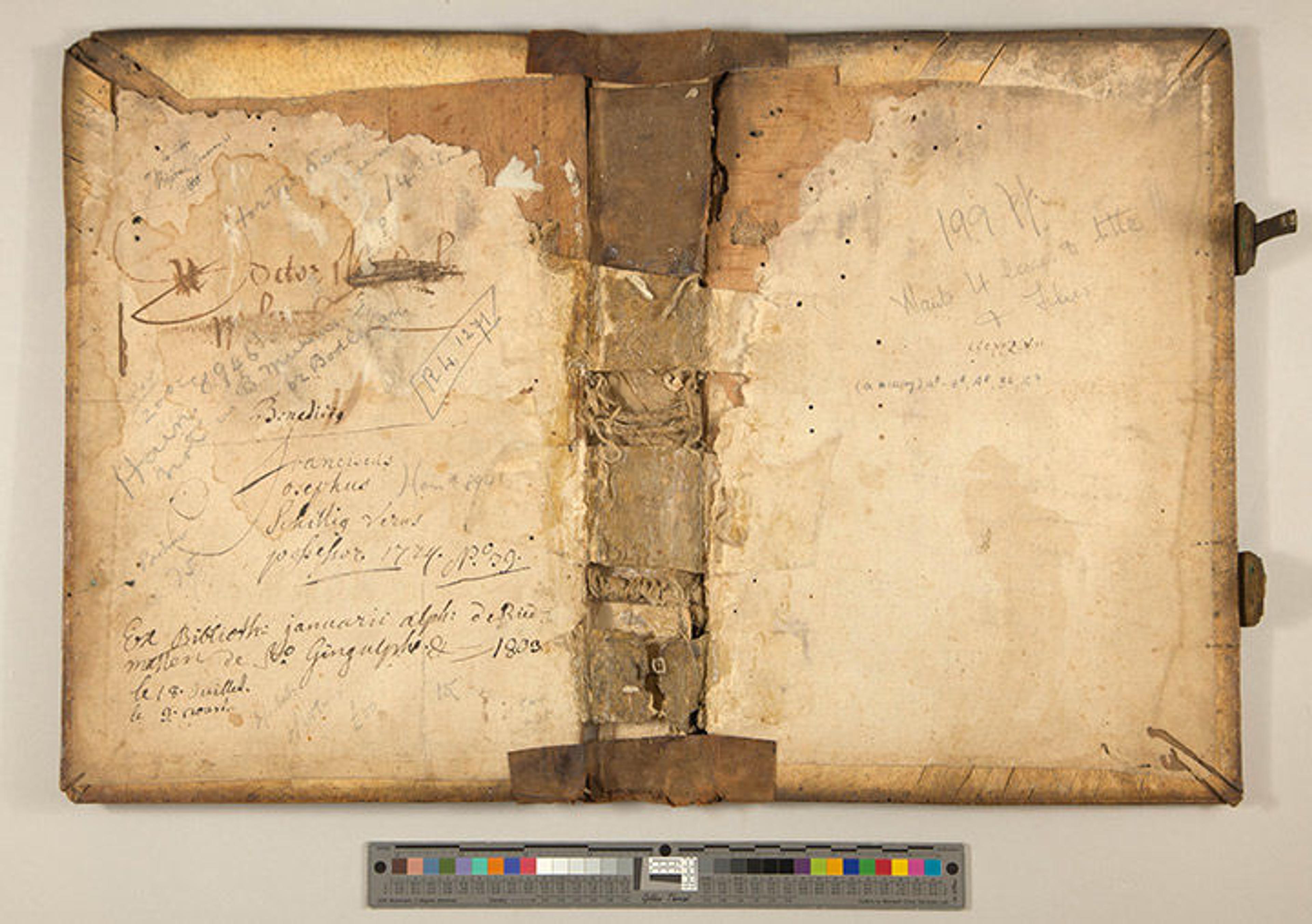
The original wooden boards, inside, with the textblock removed, showing the original cords, vellum spine linings, and the suede patches wrapped around the endcaps.
The Intervention
To treat the book I first removed the cover, after which I was able to loosen the fabric lining by moistening the adhesive with a poultice of wheat starch paste. The paste poultice, the fabric lining, and the original adhesive could then be cleaned off together.
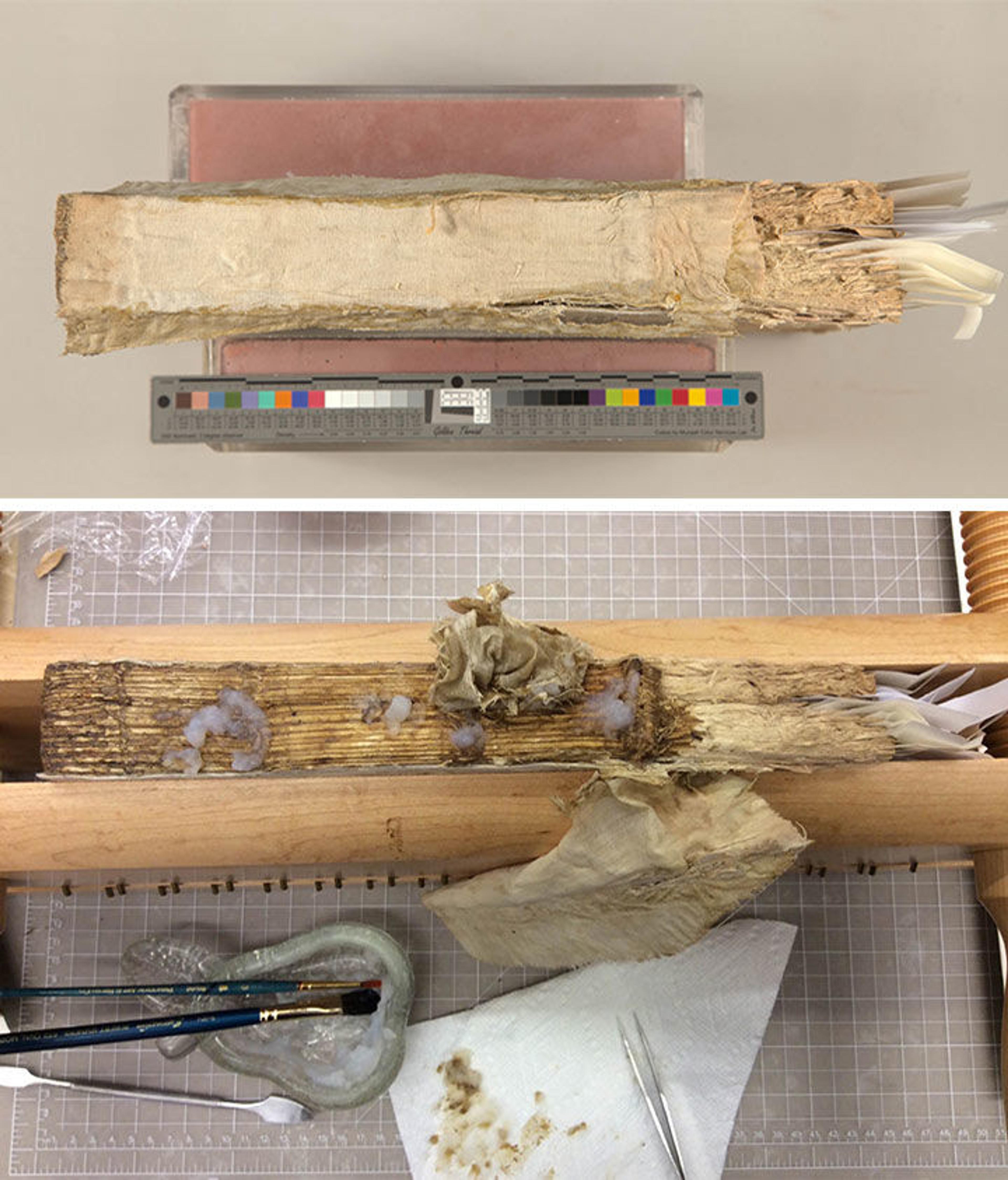
Top: The textblock spine with linen lining. Bottom: Removal of lining with poultice
The next step was to carefully undo the binding, one signature at a time, while marking the middle of each signature with a thin paper strip. These strips were lettered to keep the signatures in order. There were 26 signatures in total, with four folios in each, except for signatures q and C, which have three folios. (The signatures in this herbal start with the lowercase "a–z" and then proceed to capitals—"A–C.")
Here we see an example of one detached signature (q). The outside folio shows tears, loss, creases, soiling to the edges, and ink stains in the gutter area. The loss of paper at the top was caused by water and insect damage, which caused the paper to disintegrate.
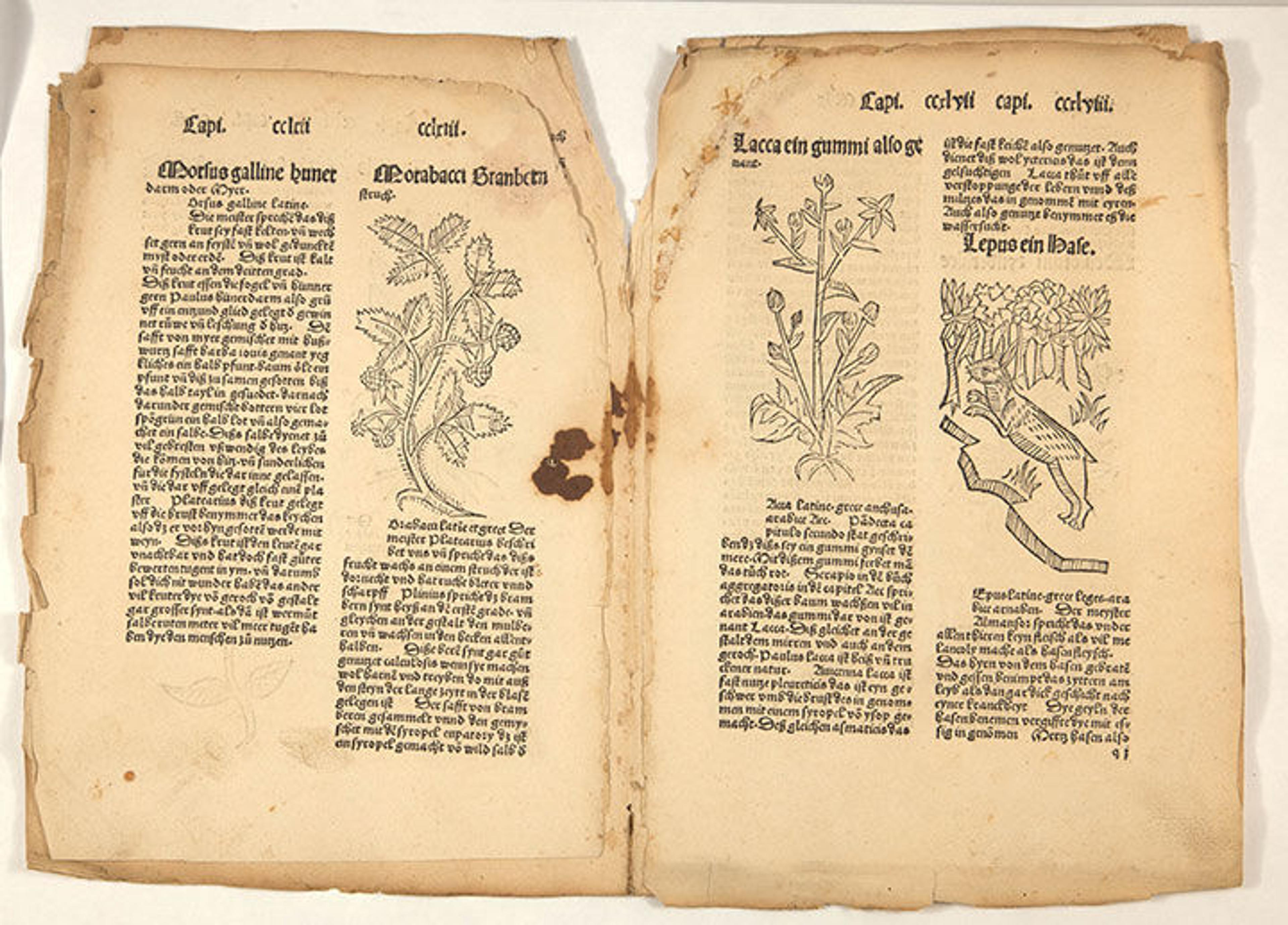
Signature q, before treatment, open to show outer folio
While most of the 378 woodcut prints were not hand-colored in this copy, there are a few exceptions such as in signature l. Additional color appears in signature j, which was intermittently rubricated—which means that red capital letters were handwritten in the beginning of new sections and sentences.
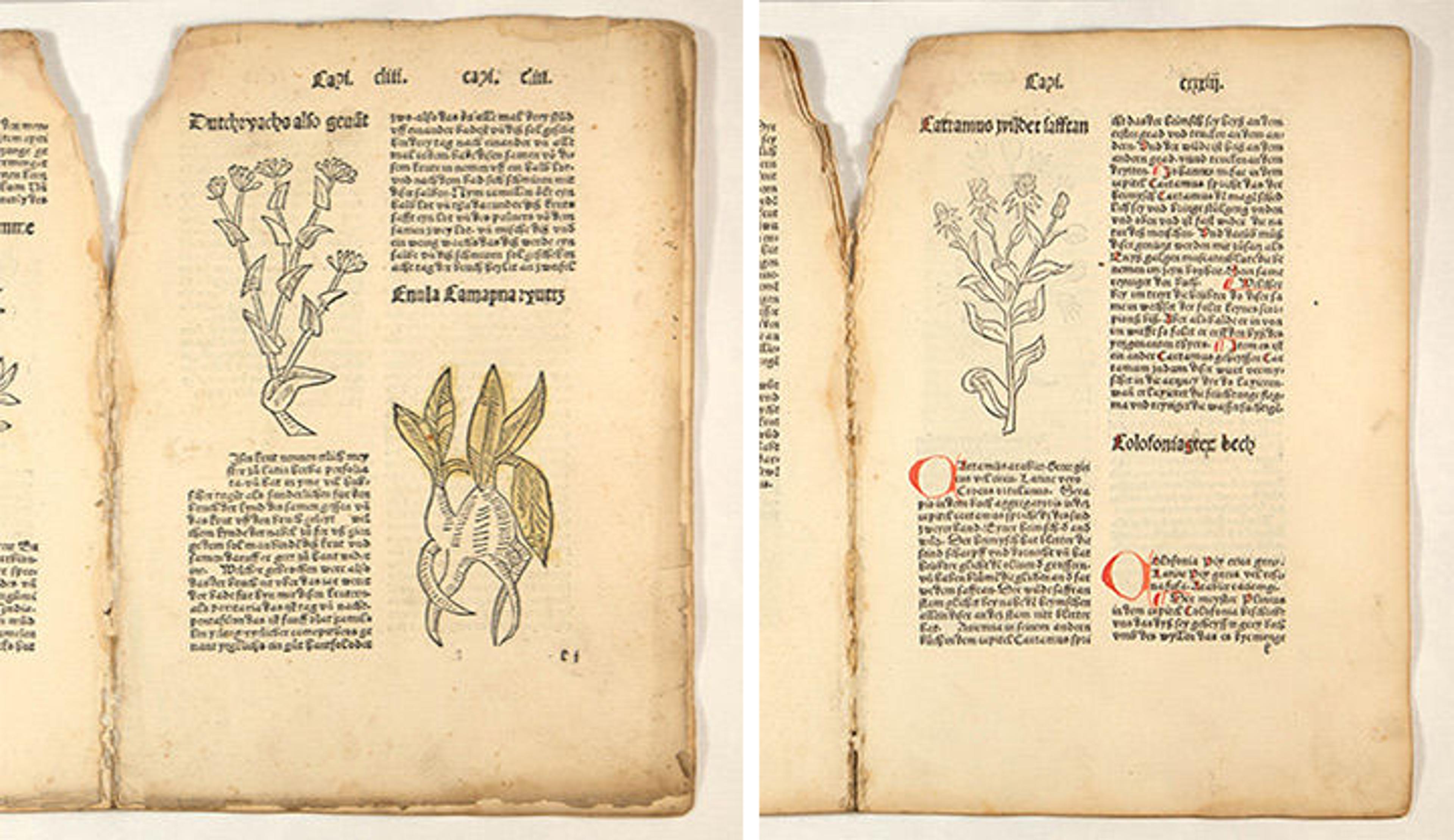
Left: Signature l showing hand-colored woodcut. Right: Signature j showing intermittent rubrication

Detail of tape removal with tweezers on folio a11. The folio was humidified to loosen the adhesive for removal.
With the help of volunteer Cara Schlesinger, page repairs were performed in two stages. First the missing areas were stabilized with a thin Japanese paper (10.5 gsm Akaso Kozo), some covering losses that were three inches wide.
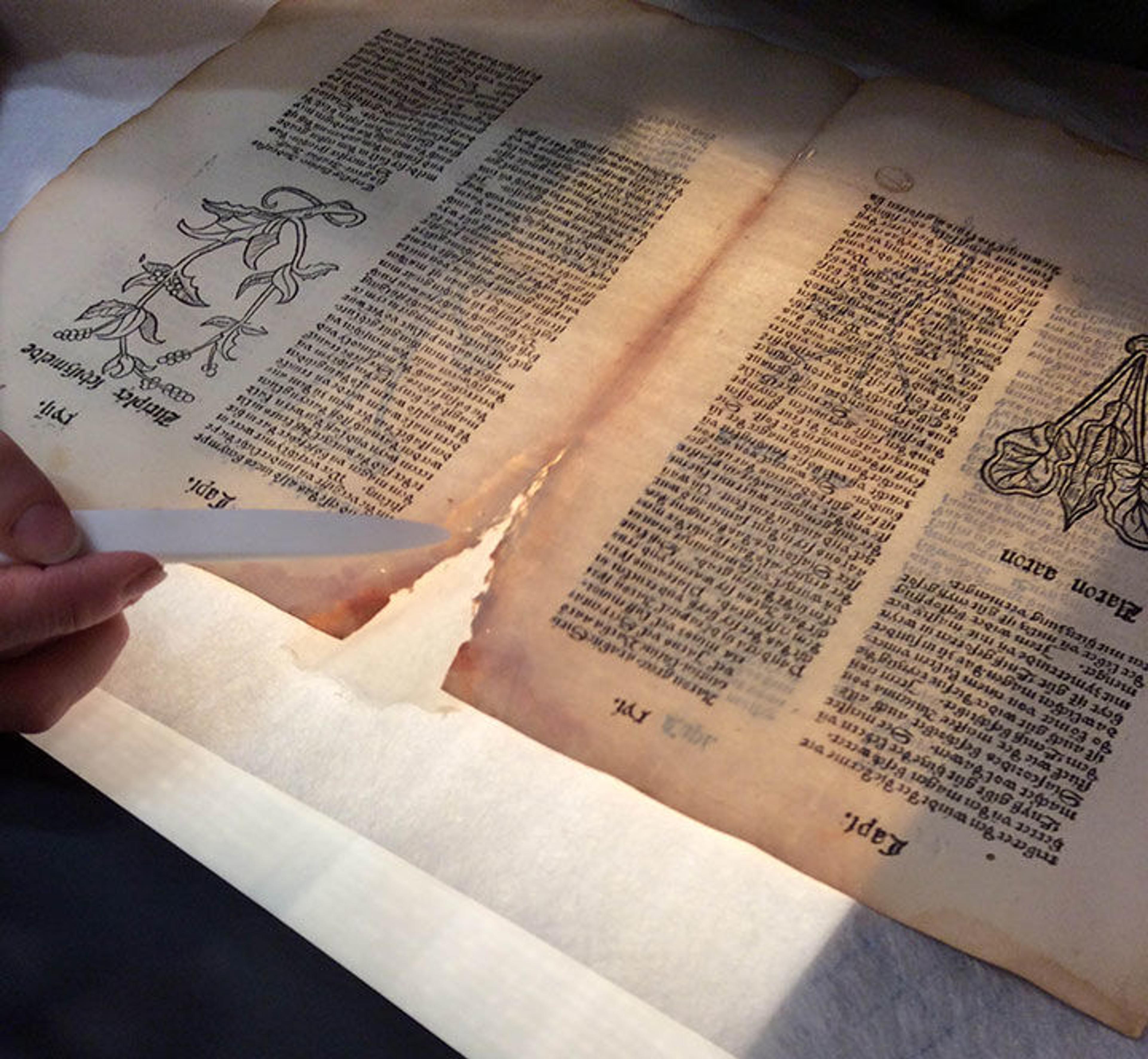
A shaped piece of thin Japanese paper applied with wheat starch paste and Teflon bone folder on a light table
After this layer was dry, the infill was added using a different paper (40 gsm Seikosen Mitsumata) to match the thickness and color of the original paper.
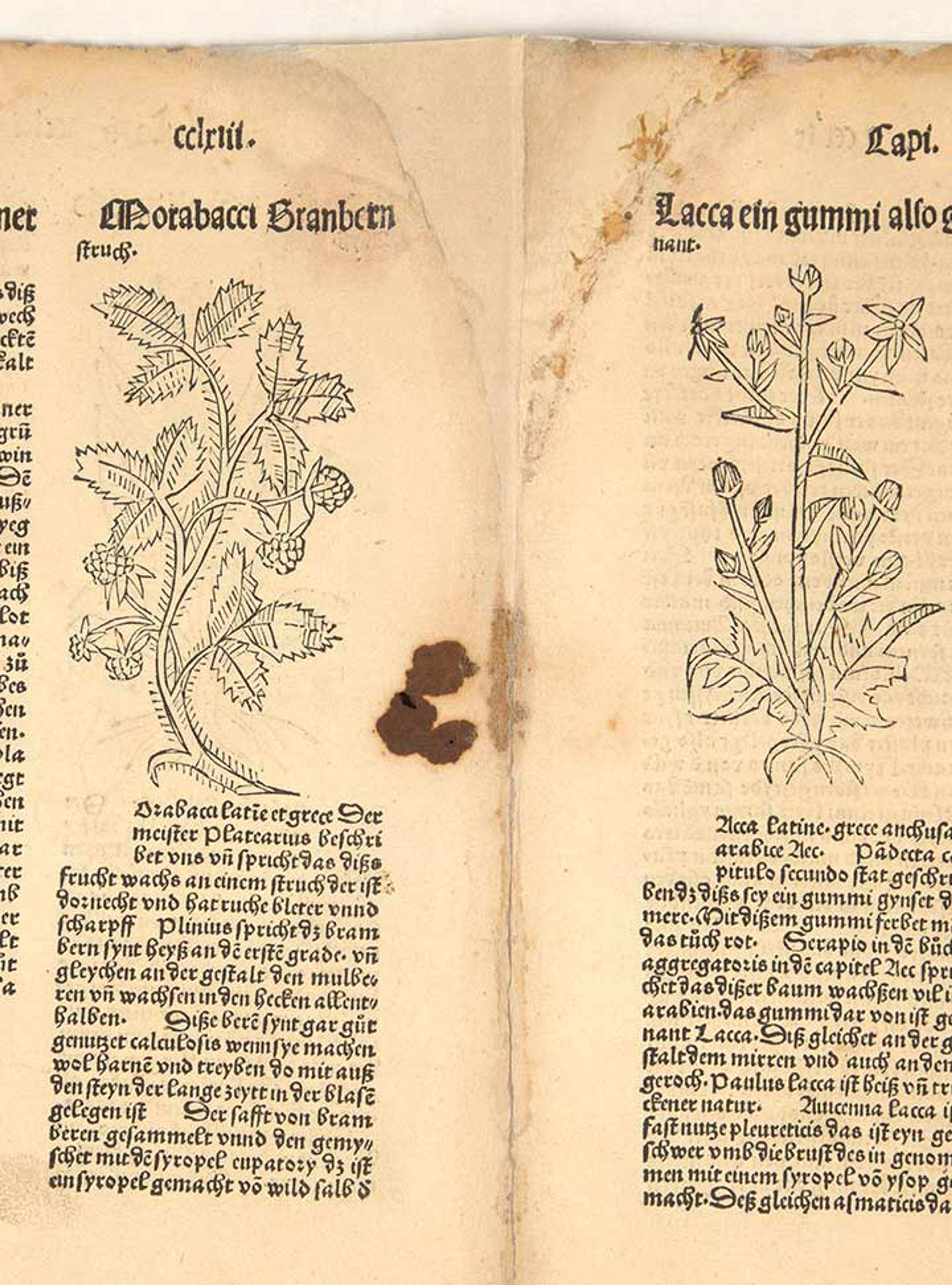
A detail of the paper infill on signature q
Once repaired, the 26 signatures were ready to be resewn. To maintain as many of the original features of the book as possible, I measured the spaces between the original boards that were still attached to the cover and looked at the original sewing holes and slots on the wooden boards. I then sewed the book with a natural linen thread that matched the weight of the original sewing thread over three double-raised hemp cords, sewing through the original holes, from the back to the front, packing every other signature.
Kindred Conservators
It was clear that reattaching the original boards to the text block would cause more damage to the original material and would be too invasive. Instead I decided that Der Gart der Gesuntheit would benefit from a conservation case.
My inspiration for this new binding came from the work of a former Met book restorer, Alfred Launder (the subject of a recent In Circulation post). In 1944 Launder created a conservation binding for an herbal with missing original boards that had its sewing structure intact. Launder, who worked in the Department of Drawings and Prints from roughly 1929 to 1949, developed a removable natural linen case with cut-out slots for the book's raised bands to slip the cords through the slots. His inscription on the back flyleaf describes the repairs and new cover.

Alfred Launder's removable conservation case with exposed raised bands. Herbarius Patavie, 1486. Plates: woodcuts, hand colored; 8 3/8 x 6 1/8 x 1 3/16 in. (21.2 x 15.5 x 3 cm). The Metropolitan Museum of Art, New York, The Elisha Whittelsey Collection, The Elisha Whittelsey Fund, 1944 (44.7.6)
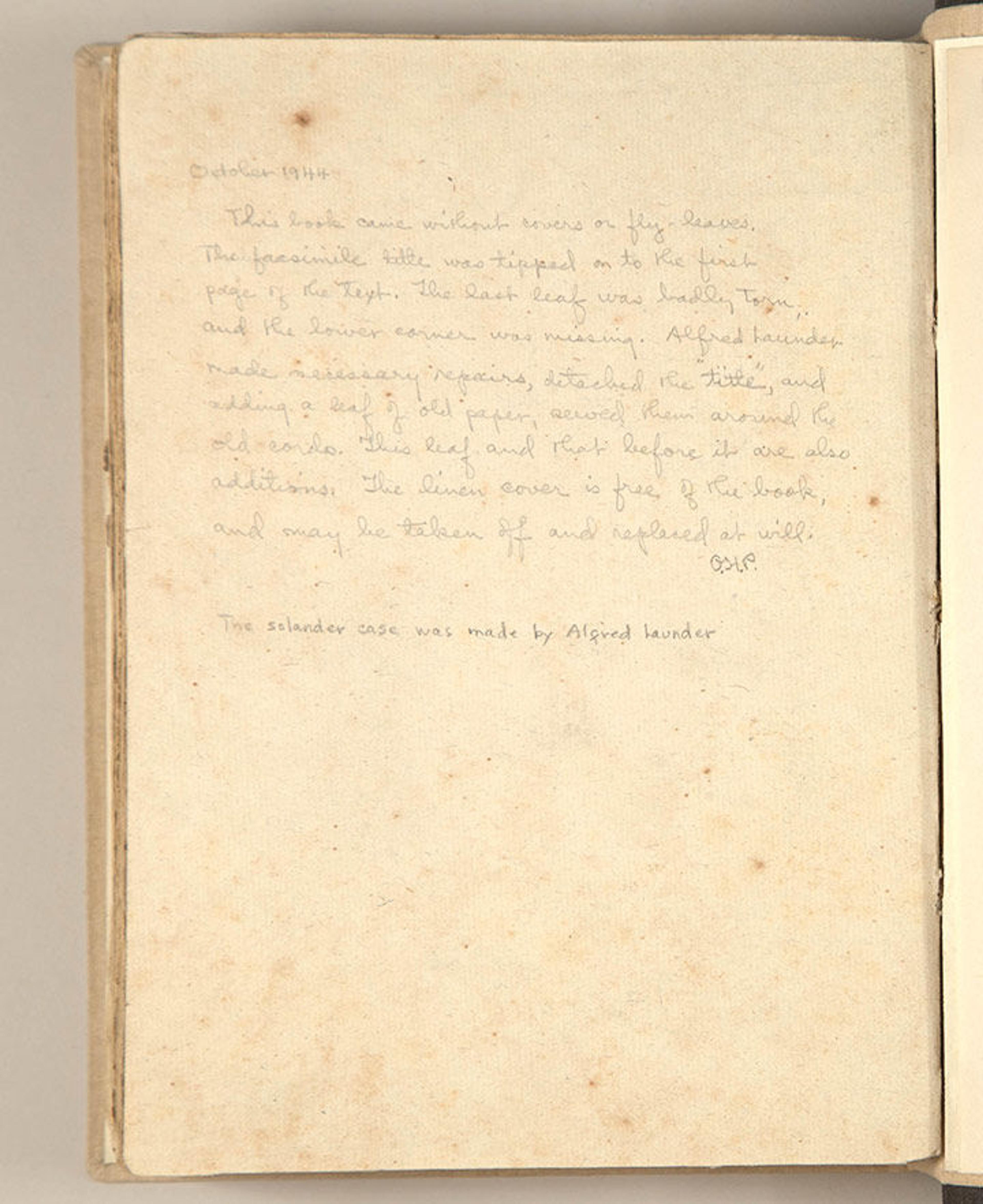
"Treatment record" penciled on the new flyleaf added by Launder
In my updated version of Launder's structure, I added pockets on the inner boards to slip in flanges made from the new endpapers. Similar to Launder's original case, my case was made with natural linen bookcloth over 1/16-inch dense board and two layers of 10 point map folder stock for the spine. The inner spine was lined with the natural linen bookcloth and slots were cut away for the raised bands. In order to make the flanges that slip into the pockets and provide extra stability to hold the book in its removable case, I sewed on new double folio endpapers made with handmade Griffin Mill paper and airplane linen for strength and rigidity.
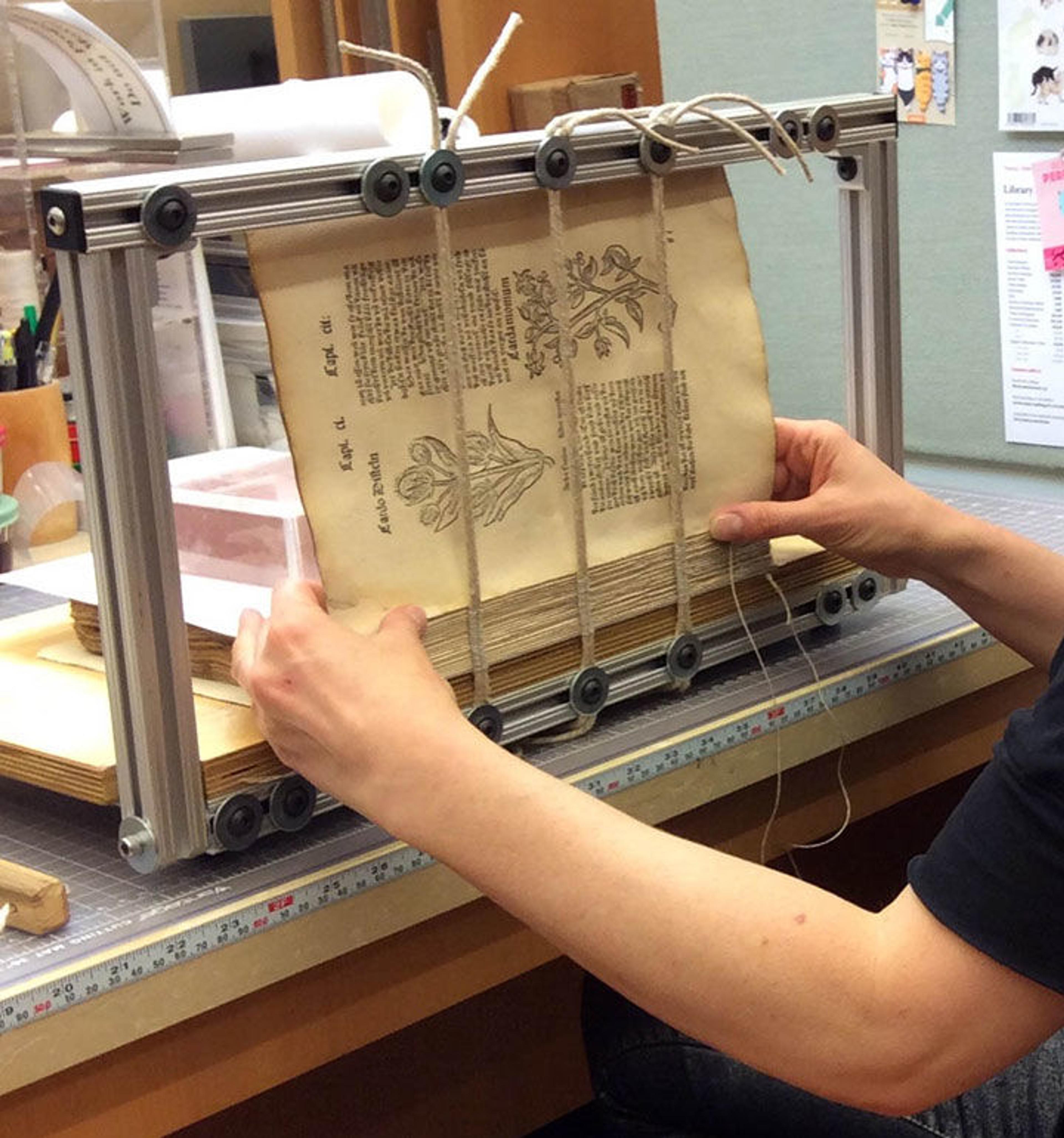
Sophia Kramer sewing on the ingenious Jeff Peachey "no-key" sewing frame

The new conservation case photographed at an angle to show the cords and slots
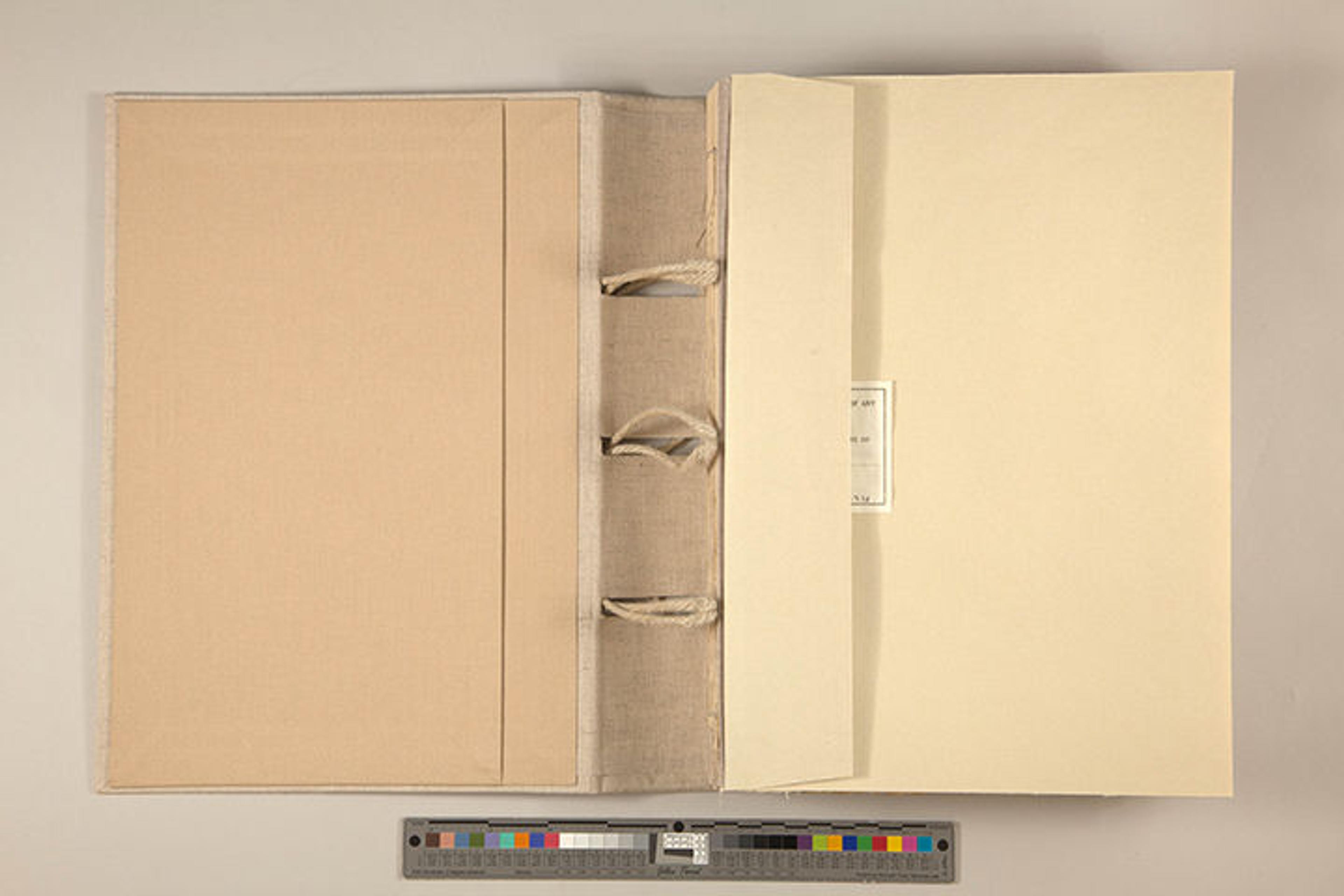
The conservation case shown open is completely removable and non-invasive
Der Gart der Gesuntheit is kept in a protective clamshell box, together with its old binding, which is preserved as a historic record of the book's original condition. This makes the information inside more accessible while still preserving the historical evidence of the binding and adding a dimension to its research values as both text and artifact. The errors of a previous restorer have been corrected by drawing on the wisdom of another.
Research for this article provided by volunteer Cara Schlesinger.
Sophia Kramer
Sophia Kramer is an assistant book conservator in the Thomas J. Watson Library.